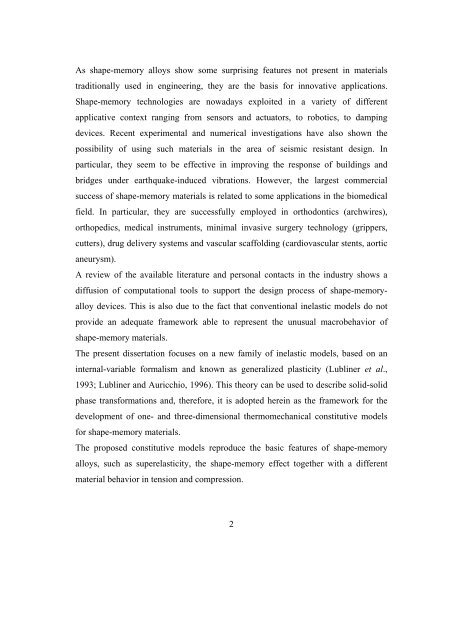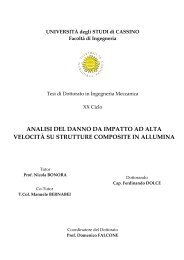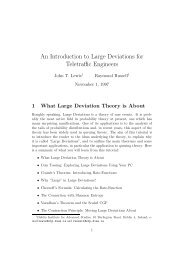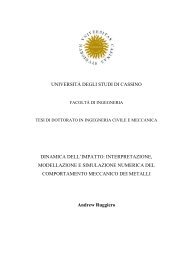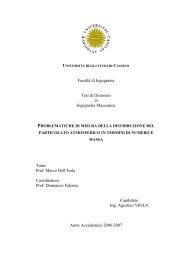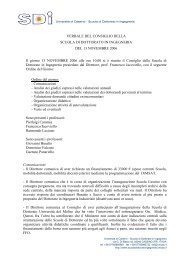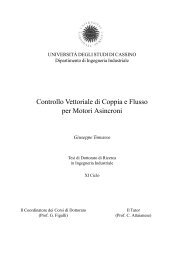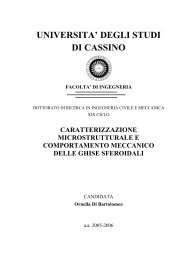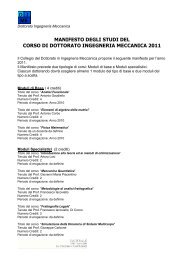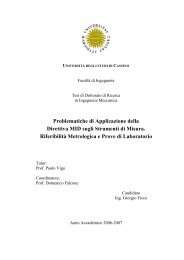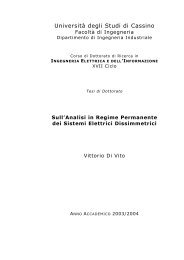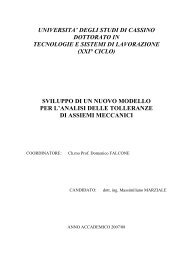Finite Strain Shape Memory Alloys Modeling - Scuola di Dottorato in ...
Finite Strain Shape Memory Alloys Modeling - Scuola di Dottorato in ...
Finite Strain Shape Memory Alloys Modeling - Scuola di Dottorato in ...
Create successful ePaper yourself
Turn your PDF publications into a flip-book with our unique Google optimized e-Paper software.
As shape-memory alloys show some surpris<strong>in</strong>g features not present <strong>in</strong> materialstra<strong>di</strong>tionally used <strong>in</strong> eng<strong>in</strong>eer<strong>in</strong>g, they are the basis for <strong>in</strong>novative applications.<strong>Shape</strong>-memory technologies are nowadays exploited <strong>in</strong> a variety of <strong>di</strong>fferentapplicative context rang<strong>in</strong>g from sensors and actuators, to robotics, to damp<strong>in</strong>gdevices. Recent experimental and numerical <strong>in</strong>vestigations have also shown thepossibility of us<strong>in</strong>g such materials <strong>in</strong> the area of seismic resistant design. Inparticular, they seem to be effective <strong>in</strong> improv<strong>in</strong>g the response of buil<strong>di</strong>ngs andbridges under earthquake-<strong>in</strong>duced vibrations. However, the largest commercialsuccess of shape-memory materials is related to some applications <strong>in</strong> the biome<strong>di</strong>calfield. In particular, they are successfully employed <strong>in</strong> orthodontics (archwires),orthope<strong>di</strong>cs, me<strong>di</strong>cal <strong>in</strong>struments, m<strong>in</strong>imal <strong>in</strong>vasive surgery technology (grippers,cutters), drug delivery systems and vascular scaffol<strong>di</strong>ng (car<strong>di</strong>ovascular stents, aorticaneurysm).A review of the available literature and personal contacts <strong>in</strong> the <strong>in</strong>dustry shows a<strong>di</strong>ffusion of computational tools to support the design process of shape-memoryalloydevices. This is also due to the fact that conventional <strong>in</strong>elastic models do notprovide an adequate framework able to represent the unusual macrobehavior ofshape-memory materials.The present <strong>di</strong>ssertation focuses on a new family of <strong>in</strong>elastic models, based on an<strong>in</strong>ternal-variable formalism and known as generalized plasticity (Lubl<strong>in</strong>er et al.,1993; Lubl<strong>in</strong>er and Auricchio, 1996). This theory can be used to describe solid-solidphase transformations and, therefore, it is adopted here<strong>in</strong> as the framework for thedevelopment of one- and three-<strong>di</strong>mensional thermomechanical constitutive modelsfor shape-memory materials.The proposed constitutive models reproduce the basic features of shape-memoryalloys, such as superelasticity, the shape-memory effect together with a <strong>di</strong>fferentmaterial behavior <strong>in</strong> tension and compression.2


